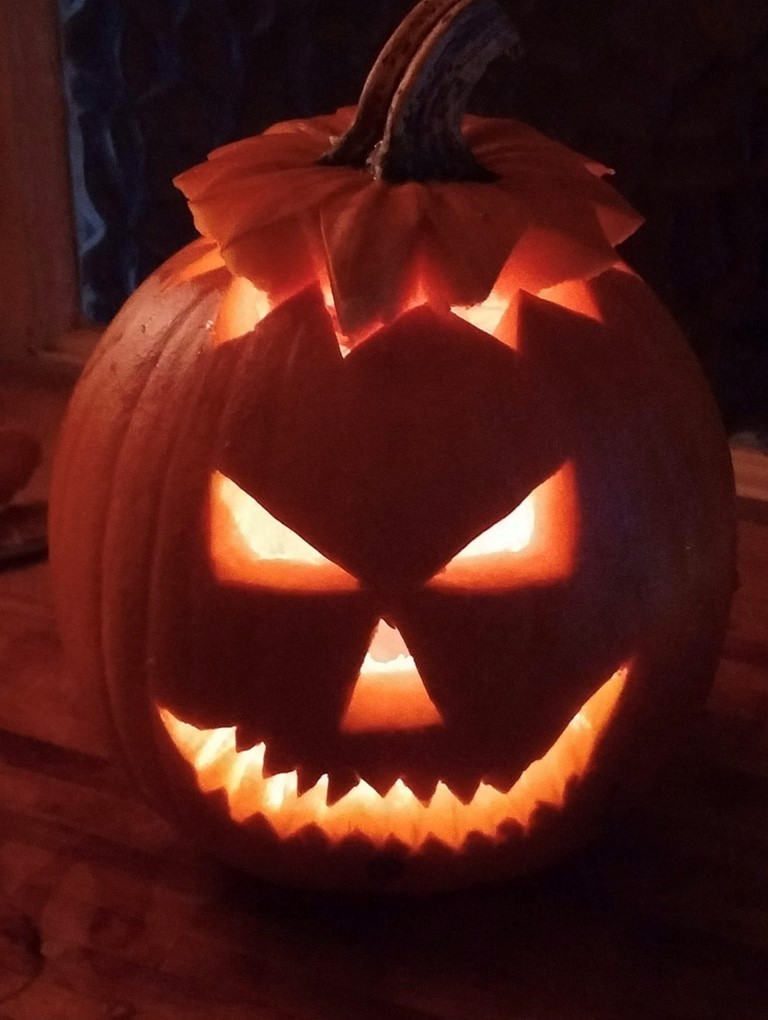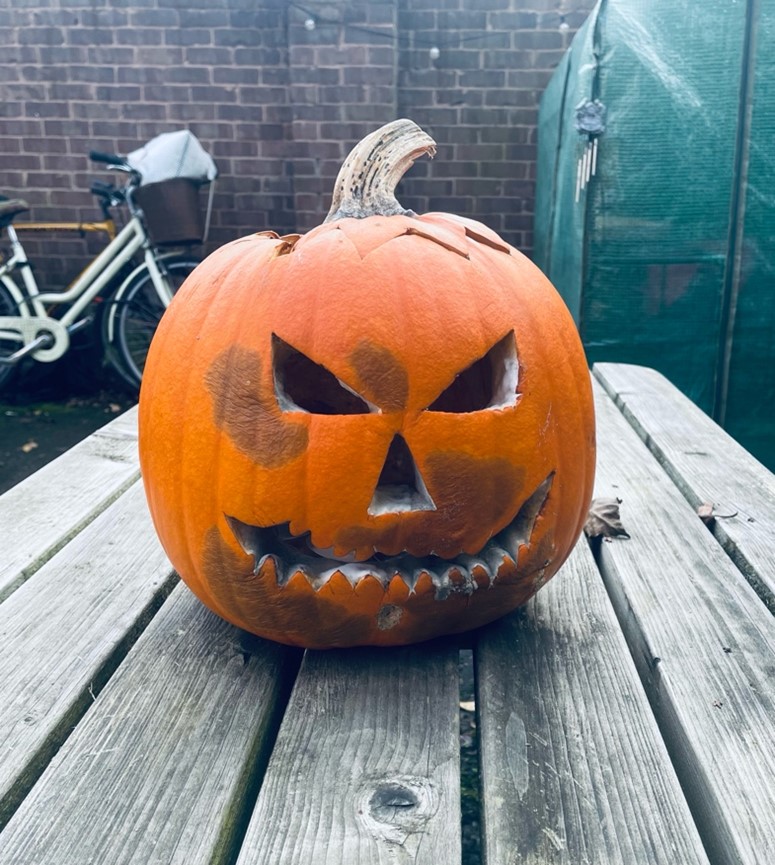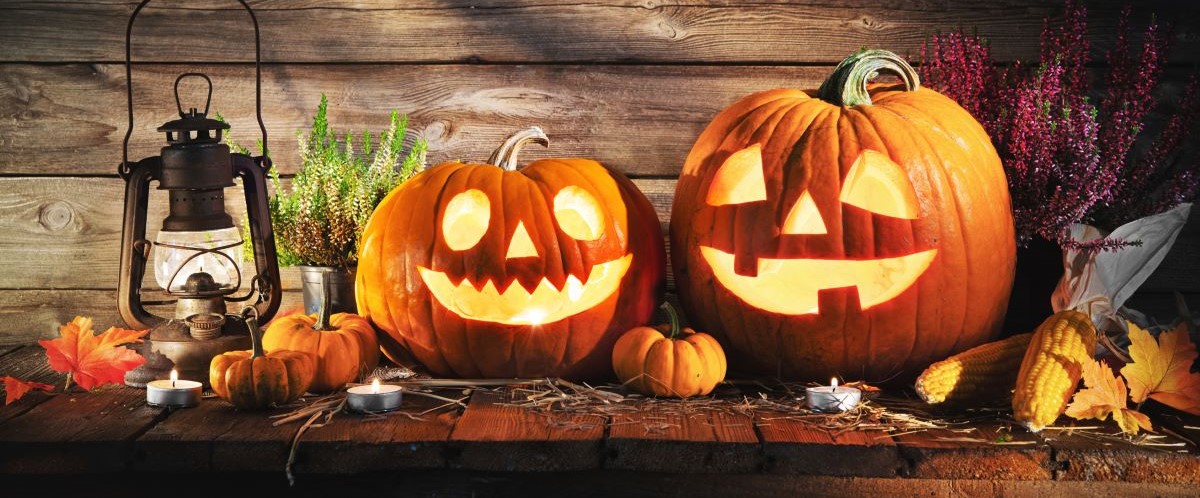 Death is, for many, not only a frightening prospect, but hard if not impossible to represent directly. We may consider it unknown, a great void, or something unapproachable that we cannot put into language. It’s the task of religion, culture and the arts to help us imagine that which, in itself, eludes us. Halloween, like other rituals, provides us with an array of symbols, metaphors and imagery that give shape to death, while allowing us to externalise our fears. As soon as we begin to picture death (such as a corpse, a ghost, or zombie), we have already found a bridge towards making sense of it.
Death is, for many, not only a frightening prospect, but hard if not impossible to represent directly. We may consider it unknown, a great void, or something unapproachable that we cannot put into language. It’s the task of religion, culture and the arts to help us imagine that which, in itself, eludes us. Halloween, like other rituals, provides us with an array of symbols, metaphors and imagery that give shape to death, while allowing us to externalise our fears. As soon as we begin to picture death (such as a corpse, a ghost, or zombie), we have already found a bridge towards making sense of it.
While we might usually avoid thinking about death, a festival can allow that which is pushed to the back of our minds to come into awareness – albeit in a safe and manageable way. Festival can be understood like this: as a temporary suspension of our usual rules or ways of coping; a time when familiar oppositions – such as life and death, inside and outside, self and other – become uncertain. Halloween may delight us in this way. Yet our thrills likely depend on how we know the costumes will soon be replaced by everyday clothes.
Within this context we might consider the Jack-o’-lantern. The tradition of carving pumpkins for Halloween comes from ancient Celtic practices, particularly the festival of Samhain, which marked the end of the harvest and the beginning of winter. They believed that on this night, the boundary between the living and the dead blurred, and spirits could roam the earth. To ward off evil spirits, people carved faces into turnips, rutabagas, or other root vegetables, placing candles inside to act as lanterns. These were associated with an Irish folktale about a trickster named Stingy Jack, who was condemned to wander around with only a burning coal inside a hollowed-out turnip for light (Eastwood, 2021).
This symbol resembles a skull or severed head. Once seen, it’s hard to un-see it. As such, the image can be associated with Sigmund Freud’s idea of the uncanny – that which is at once familiar and strange: it looks human, but it’s hollow; the lights are on, but there’s nobody home! The uncanny is also that which is simultaneously homely and scary, since it reminds us of our repressed fears. When we encounter it, what we’ve tried to forget has again returned and come to light (Reuers, 2019). Insofar as we can take pleasure in reawakening beliefs we once had in infancy, the uncanny is a recurrent motif of the horror genre.
 Additionally, our fear is usually tempered by the process of carving the pumpkin: through the very fact that we create, we make decisions, we share in the ritual, we laugh (perhaps as a defence), and we give a name to our face of death. Last year, my pumpkin was called Timothy. As a result, it is not just a monster; it is our monster; or it is ourselves as a monster. And if the Jack-o’-lantern offers us a glimpse into our own demise, presented as a memento mori (‘remember that you will die’), the insight is made bearable amid the fun of the occasion.
Additionally, our fear is usually tempered by the process of carving the pumpkin: through the very fact that we create, we make decisions, we share in the ritual, we laugh (perhaps as a defence), and we give a name to our face of death. Last year, my pumpkin was called Timothy. As a result, it is not just a monster; it is our monster; or it is ourselves as a monster. And if the Jack-o’-lantern offers us a glimpse into our own demise, presented as a memento mori (‘remember that you will die’), the insight is made bearable amid the fun of the occasion.
Yet, just as no-one laughs at a clown in the moonlight, no-one really cares for a Jack-o’-lantern past the witching hour on October the 31st – when the candles have gone out, the flies have started to land, and its flesh shrivels in the November air. It is, by this time, too close to the bone, too abject, too unmistakably a cadaver, and needs to be thrown out. By doing so, having the pumpkin land in the compost, we are not only signalling an end to the festivities, but also the re-instigation of what serves, for most of us, as a psychological need: to go about life as though death is a long way off.
Get carving!
Why not try your own activity now? Carve your own pumpkin! Consider your choices, as you do so, what your decisions mean – and think in terms of symbolism. Will you choose a large or small pumpkin? If it’s going to have a face, what kind of face will it have, and why? Where are you going to place it, and why? When carving it, and scooping out its innards, be attentive if you can to any thoughts or sensations that arise. Perhaps jot these down in a notebook? Reflect on how the ritual and lifecycle of the pumpkin brought death closer to mind or allowed you to process it, indirectly.





Rate and Review
Rate this article
Review this article
Log into OpenLearn to leave reviews and join in the conversation.
Article reviews